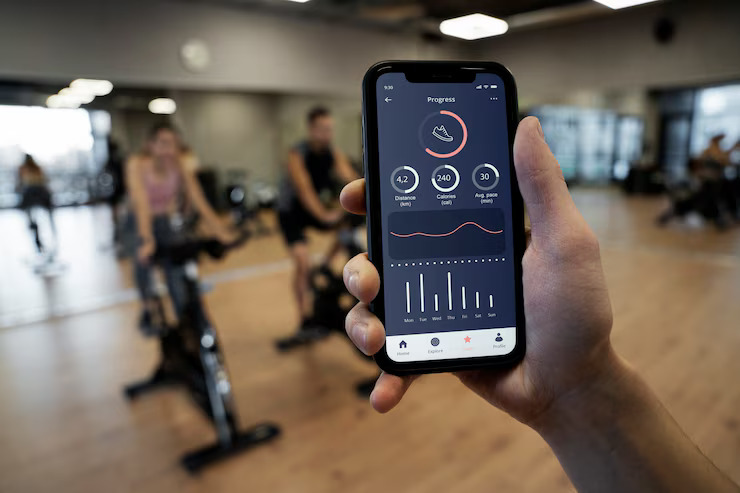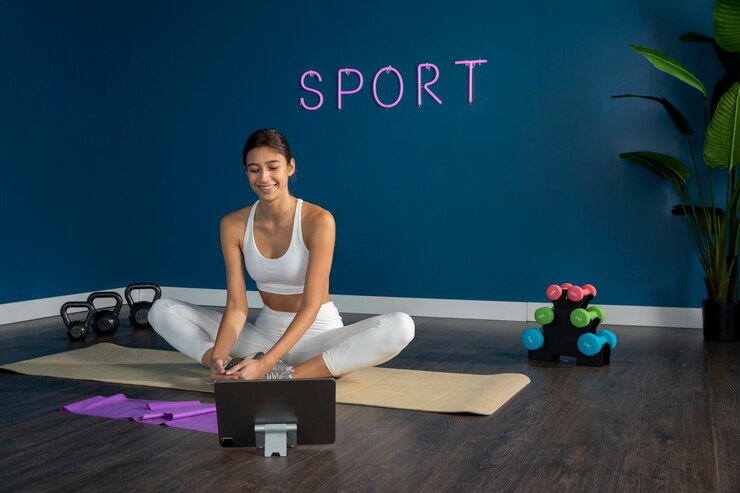Reliable staffing is almost always at the top of the list when discussing a studio owner's goals, and it's not an easy subject to tackle. You want your employees to love their job but also connect with the clients, teach safe classes, show up early, and remember to turn the thermostat off when they leave. It can be a long list of expectations, and your teachers may not know where they're meeting the mark and where they're falling short. How do you help them succeed? Reliable feedback is your ticket to engaged, long-term relationships with your teachers.
Does the idea of giving regular feedback to your staff make you uneasy? More than 75% of those surveyed reported that they found feedback valuable for their job performance, and multiple studies have linked employee engagement with consistent performance feedback. Although regular, scheduled reviews are important, each feedback opportunity doesn't need to be a formal process. Surveys show that the younger your staff, the more they prefer weekly or even daily feedback! You don't need to run out and buy a clipboard to jot notes on, but here's how to get the most out of your review process.

Why give feedback?
A regular review process does more than keep your employees engaged- although that is certainly a significant reason in itself. Executed efficiently, consistent feedback clarifies staff expectations, improves employee behavior, identifies training areas that need more emphasis, increases employee confidence, and, perhaps most importantly, improves your clients' experience. Have you ever worked at a job where you didn't know if you were meeting expectations? Did it leave you feeling insecure in your job performance? If so, you're in good company. 64% of those surveyed in a global study said that their manager failed to meet the employee's regular feedback expectation. More than half! If you've found that your studio has become a revolving door of teachers, it's time to implement your feedback process.
What if you’re an established studio?
Just because you haven't implemented a review process in the past does not mean you missed the boat. All of these action steps can be implemented if you're a brand new studio just starting out or an established studio of 20+ years. In either case, first, take the time to draft review policies that support your studio's mission for yourself and then bring your staff on board, making sure to explain why this benefits both the studio and the employee. Your new system should feel collaborative and constructive to building your employees' careers, too, not just a new top-down way to give feedback.
Here's a quick exercise to try before we dive into how to give appropriate feedback. Close your eyes and imagine you've just finished teaching your class. Clients are preparing to leave, and you still have your class notes in your hand. You walk to the desk and find yourself face-to-face with the studio owner, who immediately launches into a laundry list of problems and perceived failures that occurred in your class. Do you absorb the feedback? Make a plan to improve? Feel empowered and supported? Probably not. The more likely scenario is that you feel attacked, and your body goes into fight-or-flight mode. If you're anxious about meeting expectations already, you probably blackout, get defensive or fail to digest the list of shortcomings altogether. Worst-case scenario as an employer, right? Even if the studio owner or manager meant well, the delivery was nowhere near conducive to learning and empowerment. Here's how to get it right.
fitDEGREE can support your Studio Fitness
Positive and Actionable
"You're always offbeat, and your cues are late." Do you feel particularly motivated to work on your cueing or musicality after receiving that feedback? It takes more effort to word your feedback in a positive light, but it conveys to your employees that you're on the same team and you're here to support, not drag them down. Make sure your delivery matches your intention. You're not giving feedback to make your staff afraid to see you in class. You want to help them be the best teacher they can be, and so do they! Feedback should be constructive and include actionable steps.
"I noticed that you've been having a difficult time with your musicality. I remember how hard it was to catch the beat when I first started teaching this format, too. Do you know what helped me? Snapping the 8-count to any song I heard on the radio. Try it this week, and we'll regroup next week to see how it's going."
You probably feel more inclined to practice your feedback now that you know 1. you're not alone in this struggle and 2. what steps to take to meet expectations. It might take practice, but remember, the goal is to help your team develop, teach them how to meet expectations, and increase buy-in, not tear them down and hurt their feelings.
Examples of actionable feedback:
- Instead of "class felt slow." Try, "Let's work on memorizing your lesson plan and speeding up your cueing so that each exercise flows into the next. Practice with me real quick..."
- Instead of "You're late again!" Try, "Starting classes on time is essential to our client experience. Does this time slot not work well with your schedule? I noticed that you've been 5 minutes late twice this month. How can we problem-solve to be sure class starts on time?"
- Instead of "great job!" Try, "I really appreciate that you come to class prepared and enthusiastic. It gives our clients such a positive experience."

Clear and Consistent
In a similar vein, in order to be effective, feedback should be both clear and consistent each time it's delivered. During quarterly evaluations, either take the class or sit in the back and quickly jot down notes. Talk to your employees about how you conduct evaluations ahead of time, and even explain that you'll be noting both positive and constructive feedback, so your teacher isn't left panicking every time she sees you writing. When you give notes, succinctly and clearly describe both the positive and the negative, so your employee isn't left guessing what precisely the feedback meant. It's hard to improve when you're not sure what you did wrong.
Examples:
- "I noticed and appreciated that you were diligent with your physical adjustments throughout class. Each client received personalized attention from you, and that's so important for our studio's culture."
- "I loved the exercises you chose to include today. My only note is that the class ended rather abruptly, which felt rushed and surprising. Make sure you leave five minutes at the end of class to gradually cool down and help transition the clients back into their day."
Regular and Predictable
No one likes a pop quiz, and the same is true for surprise feedback. Your staff should be able to anticipate and mentally prepare for their evaluations. If you don't have a system for feedback in place yet, take some time to create your best practice handbook and present it at the next staff meeting. Your staff should know the following,
- How often are formal reviews conducted?
- When should I expect informal feedback?
- What will feedback look like?
- If the manager/owner is in my class, is that an evaluation, or is s/he just there to workout?
Regular evaluations should be predictable in both schedule and delivery. Consider conducting your more formal assessments on a regular schedule, i.e., quarterly, so the employee knows what to expect.
Informal Feedback
Let's say you've just taken a teacher's class and you noticed that the music volume was too low, which brought the energy down. This isn't a scheduled formal review, but feedback should still take place so your teacher can uphold the studio's standards for the next class. If you've built a culture of reciprocal feedback and consistent growth amongst your staff, it won't be a problem to share your observations and suggestions with your teacher. Just make sure the following is in place before you do:
- Wait for the clients to filter out. It's uncomfortable to receive critiques in front of an audience.
- Eliminate distractions. Put your phone down and maintain eye contact so that your feedback comes across as sincere.
- Check your body language and voice. If you're having a bad day, now isn't the time to share your thoughts, and the same goes for your instructor.
- Check before you launch into your lesson. Ask your employee, "Is now a good time to talk about class today, or would you prefer to schedule a time this week?"
- Keep it short, positive, constructive, and actionable. All of your formal review rules apply for regular feedback, too.
When It's Serious
As much as we love our jobs as studio owners and managers, it certainly comes with its fair share of difficult conversations. Sometimes, putting a positive spin on it isn't going to change the fact that your teacher slept through her 6 AM class...for the third time this month. When the feedback will be difficult or result in an employee's termination, remember the following:
- Document everything. This is essential. Even if you live in an at-will employment state, you need to document what exactly the infraction was and what steps, if any, come next to return your employee to good standing.
- Give feedback in person. It might be easier to hide behind your keyboard, but that can leave room for misunderstandings. Delicate feedback needs to be face to face, so there's nothing left dangling between the lines.
- Schedule a sit-down ASAP. Negative feedback should be timely. Don't wait a week before meeting with your employee, but if you're really angry, you should schedule the meeting out at least 24 hours so that you are calm and level-headed.
- Try your best to take emotion out of the equation. If you don't have a handbook that clearly outlines employee expectations yet, now is the time to make one. Feedback is much easier to give and receive when the rules are clear for everyone.
Recognize the growth
Although we all want to be - and employ - intrinsically motivated people, external validation makes us feel like our efforts are being noticed. Feedback isn't just for critiques. Let your staff know when they're surpassing your expectations. Recognition of a great job can be direct, "Ashley, that class was amazing! I loved the sequencing today; the class seemed to fly by!" Or public, like presenting your teacher with her favorite coffee at the end of a class she subbed, or a social media post sharing that one of your teachers just taught her 500th class. Get to know your staff and ask them,
- What makes you feel appreciated?
- How would you like me to share positive feedback?
- Are you okay with public recognition?
Feedback often carries a negative connotation, but done correctly, regular reviews should make your staff feel supported, engaged, and important to the team. So, create your handbook, schedule a fun staff meeting, and share your ideas with your staff. Your staff retention will thank you for it.













.jpg)












.jpg)










.jpg)










































.jpg)





























